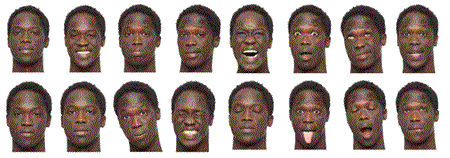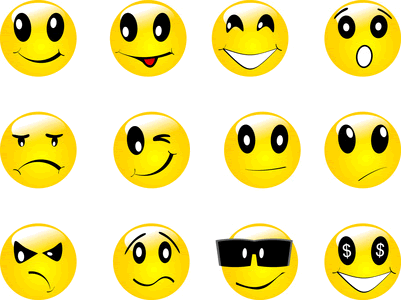- POPULAR ARTICLES
- Thank You Words
- Retirement Wishes
- Face to Face
Emotion Faces
Real emotion faces help people communicate more effectively when having a conversation in person.
But what happens when people are having a text or email conversation?
Conversation in Person
When we are having face to face communication, we can hear the words and observe the body language of the other person, including their facial expressions.
Their faces will convey what they are feeling or thinking. Few people master poker faces, most people let their emotions show through their facial expressions.
Take a look at the faces below and try to determine the emotion behind each one. You'll notice that some faces are extremely easy to read, while others are a tossup. When we communicate in person, those ambiguities can be eliminated with the other cues we get from the person, such as gestures, tone of voice, words being used and so forth.

Texting and Emailing
When we are having a conversation via email and text, we try to convey the missing facial expressions by using emoticons, those little faces - and more - that you make using letters and symbols. As you know, a smiley would be a :)Emoticons can be helpful in adding tone to an otherwise flat email or text. Consider the following examples.
You're texting a friend about being late for lunch. Here's your text:
I'm running a bit late. Sorry.
Or... if you replace the word sorry with a sad face.
I'm running a bit late. :(
Why would the second text be better? Because you're telling your friend that your face looks sad, that you're really feeling sorry about being late. Of course, it's possible you're making the whole thing up - your being sad and all. Still, the text with the emoticon will sit better with your friend.
 Email and texting systems have evolved to automatically replace the emoticons (letters and symbols) with faces such as the ones to the left.
Email and texting systems have evolved to automatically replace the emoticons (letters and symbols) with faces such as the ones to the left.
Go ahead and make faces, with your own face or with symbols.
You'll be better understood.




